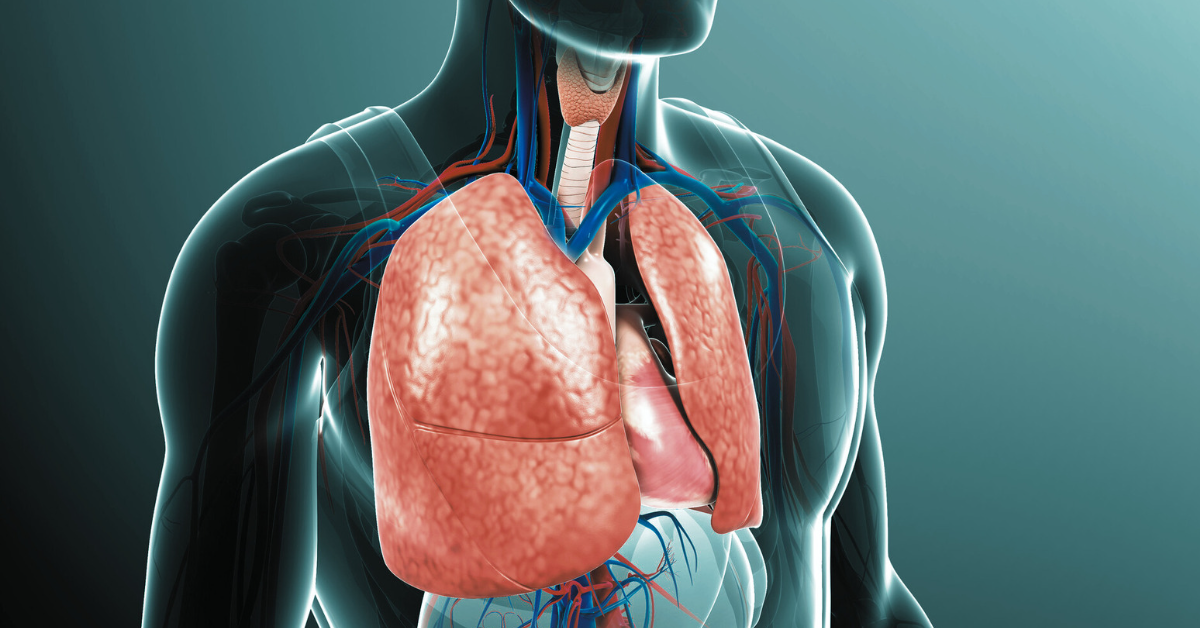
People with Diabetes (PWD) are at an increased risk of developing respiratory conditions such as asthma, chronic obstructive pulmonary disease (COPD), infections (COVID, flu, and pneumonia), and others. Here is some information to help you maintain an optimal functioning respiratory system.
Your respiratory system consists of organs, tissues, and muscles, such as your mouth and nose, sinuses, trachea, lungs, and diaphragm.
Your respiratory system works alongside the heart to supply your cells with oxygen and rid wastes such as carbon dioxide. The lungs work similarly to trees in the exchange of gases. Trees take in carbon dioxide and release oxygen into the air. So likewise, our lungs take in oxygen and remove carbon dioxide, waste from the body and release it into the air.
Your respiratory system has smooth muscle that contracts and relaxes to promote air exchange and sinuses to warm the air coming into your body. Coughing and cilia, tiny hairs that line the airway, help your body eliminate foreign agents. In addition, the respiratory system requires adequate nutrients and blood supply to function properly, or else complications can occur.
Excess mental and physical stress can make it difficult for your respiratory system to function effectively. Inflammation is at the root of many health conditions, including asthma and Chronic Obstructive Disease (COPD). COPD is a chronic condition often linked to smoking and can increase a person’s risk of developing lung cancer.
In addition, uncontrolled blood sugars and how long you have diabetes can make you susceptible to bacterial and viral infections such as COVID, influenza, and pneumonia. Genetic factors and how you respond to stress can also increase your risk of developing a respiratory condition.
Proper nutrition, consistent at-your-level physical activity, and periodic healthcare visits are essential to maintaining an optimal functioning respiratory system.
Colorful foods such as fruit (blueberries, grapes) and vegetables (beets, broccoli, kale, spinach, bell peppers, and others) provide antioxidants (Vitamins C and E) and phytochemicals to help your body fight infections and inflammation. In addition to providing antioxidants, beets contain nitrates. Nitrates dilate blood vessels that help keep proper blood flowing through your lungs. In addition, lean protein helps to support your respiratory muscles and provides additional antioxidants.
Consistent physical activity (30 minutes five days a week) also helps promote blood supply to your lungs and the rest of your body. Walking is one type of aerobic activity I often encourage PWD to start doing. As always, check with your healthcare provider before starting a physical activity plan and periodically to ensure the program works for you instead of against you.
Be aware of any chemicals that trigger respiratory issues. Reduce your exposure to pollen, dust, mold, second-hand smoke, and air pollution as much as possible. If you smoke, consider quitting. Even after years of smoking, you can still improve your lung health.
Discuss any respiratory concerns or warning signs and symptoms such as chest pain, excessive coughing (whether productive or non-productive), shortness of breath, wheezing, and others with your doctor. Some symptoms disappear after you remove the trigger, can be treated with over-the-counter medications, or need a prescription. Your healthcare provider may need to run tests to determine your best treatment.
As noted above, your respiratory system requires a supportive environment of nutrients. Check out these resources to help prepare meals that support your respiratory system.